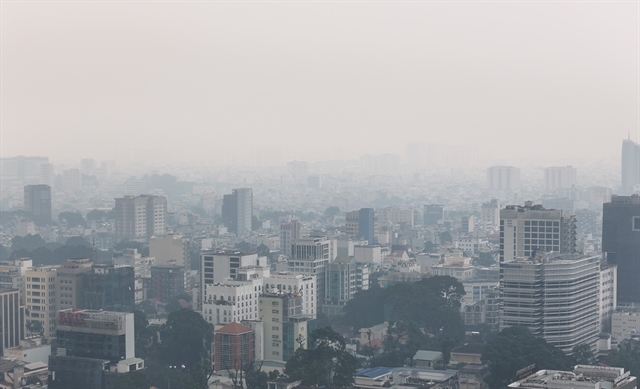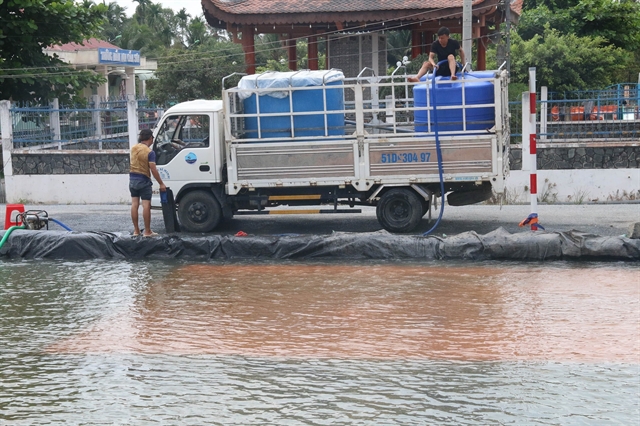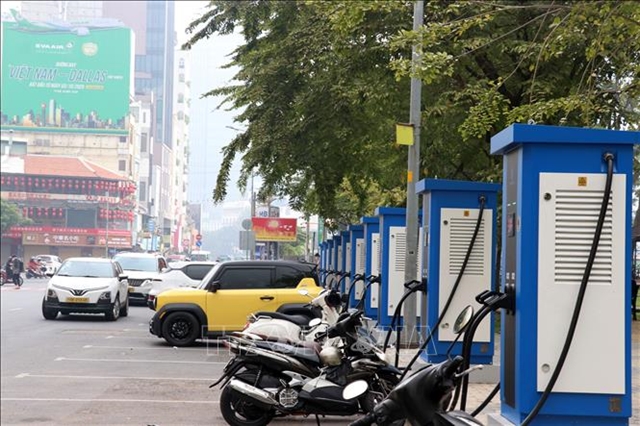 Environment
Environment


|
| A resident in the Mekong province of Tiền Giang's Cai Lậy District gets free fresh water for her durian garden, which has been affected by drought and saline intrusion. The water is being supplied by the province once a week from March 13 to April 30. — VNA/VNS Photo Minh Trí |
HÀ NỘI — Saline intrusion in the Mekong Delta will likely remain at a high level until the end of April or early May, before gradually declining, according to the National Centre for Hydro-Meteorological Forecasting.
In the worst case scenario, drought and saltwater intrusion may last even longer if the current absence of rains continues and the use of water on river tributaries and reservoirs keeps increasing, the centre said.
Since the beginning of April, the southern region has seen no rain amidst low humidity and high temperatures. A heat wave has been ravaging the region, with temperatures of up to 36–37 degrees Celsius.
The centre forecast heavy rains and thunderstorms in the region with the potential risk of whirlwinds, lightning and hail to come later this month.
It has also predicted that the salinity will be on the rise until April 10 and peak over the weekend. In several places in the provinces of Long An and Kiên Giang, salinity may even intensify and pass the highest level recorded last month.
Saltwater intrusion will gradually decrease in the second half of this month, according to the centre. It has advised affected localities in the region to restrict irrigation in order to minimise losses.
For farming areas of high-value, salt-sensitive fruits, it is important to check salinity levels before irrigating crops. — VNS




